| 1st century BC? |
Paul the Deacon attests that, due to population pressure in southern Scandinavia, a small tribe named the Winnili divide their number into three parts and chose by lot which part will leave (a practice that is typical in German folk tales). Two leaders, Ibo and Alo, are appointed to command the unlucky part and they lead it to the southern shores of the Baltic Sea in the region between the Elbe and the Oder, where they resettle. Their landing place is Scoringa, which, by common agreement, is thought to mean 'shoreline'. Prosper of Aquitaine names the leaders as Iborea and Agio, while Saxo-Grammaticus calls them Ebbo and Aggo, and the popular song of Gothland names them as Ebbe and Aaghe. The event, if it happens at all, is undatable, but could be placed after the large-scale incursion of the sea into Jutland between 120-114 BC, which triggered population movements in Scandinavia. |
|
| Ibo |
Joint leader during the exodus from Scandinavia. |
|
| Aio |
Brother and co-leader. |
|
Scoringa is part of the territory of the Vandali. Their chieftains, Ambri and Assi, demand tribute, with the threat of war against this small upstart tribe if it is not paid. The Winnili refuse to be cowed and chose war, Legend has it that the Winnili women join the battle line, with their long hair tied forwards in front of their faces to resemble long beards. 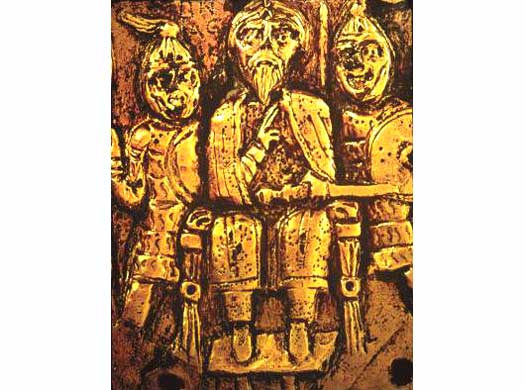 A close-up of the Valdinievole plate showing Lombard King Agilulf (591-615) receiving the submission of barbarous enemies, flanked by winged victories, although its authenticity has been questioned A close-up of the Valdinievole plate showing Lombard King Agilulf (591-615) receiving the submission of barbarous enemies, flanked by winged victories, although its authenticity has been questioned |
|
|
| 8 - 6 BC |
Migrations of Marcomanni from the region of northernBavaria and the River Main lead them to the homeland of the Boii inBohemia. The Marcomanni king, Maroboduus, forms a confederation of tribes which includes Langobards, Lugii, Marcomanni, and Senones, along with the Boii themselves. Possibly this also incorporates remnants of the alliances of Ariovistus of theSuevi in 58 BC. Thanks to this event it would seem that the Langobards, if they really had originated in Scandinavia, had migrated into Central Europe before even theGoths. |
|
| AD 5 - 6 |
Roman Emperor Tiberius undertakes campaigns against various German tribes in an effort to extend the frontiers of the empire from the Rhine to the Elbe. At this time the Langobards dwell between the Weser and the lower Elbe. They are described by court historian Velleius Paterculus as 'more fierce than ordinary German savagery,' when they take part in attacks led by the Marcomanni. Their power is broken by the legions of Tiberius. |
|
| 17 - 19 |
War breaks out between Arminius of the Cherusci and Maroboduus of the Marcomanni. The cause is Maroboduus' decision not to join the Cherusci-Roman war of AD 9 in common cause with his fellow Germans. Now the Cherusci join with some of Maroboduus' own Suevi subjects, the Langobards and the Semnones, to stage a revolt against his power. Following an indecisive battle, Maroboduus withdraws into territory that later formsBohemia. |
|
| 20 |
Strabo places the Langobards near the mouth of the Elbe. They are in frequent and close relations with the Hermunduri and Semnones, two greatSuevic tribes who dwell higher up the stream. Strabo seems to suggest that in his time the Hermunduri and Langobards had been driven from the left to the right bank of the Elbe.  The mouth of the River Elbe was held by the Langobards during the early part of the first century AD, but it was also the only access to the sea for the powerful Semnones tribe The mouth of the River Elbe was held by the Langobards during the early part of the first century AD, but it was also the only access to the sea for the powerful Semnones tribe |
|
| 47 |
After the nobility of the Cherusci has been destroyed by internal conflict, a Roman-educated prince is appointed as their king. However, he soon falls out of favour with his people and they attempt to expel him. The Langobards, previously a minor tribe under the dominance of the once-mighty Cherusci and Marcomanni, now appear on the scene with enough authority and strength to impose the restoration of the deposed king. |
|
| 98 |
In his work on Greater Germania, the [Roman](ItalyRomeEmpire.htm#Adoptive Emperors) writer Tacitus locates the Langobards in western Central Europe, on the right bank of the Elbe (supporting Strabo's view). Accounted as being part of the Suevi confederation, they occupy territory immediately south of the Saxons (with the Angles to the north-east), and with the [Frisians](FranceHolland.htm#Ubbo Kings) on their western flank. The neighbouring Cherusci are located further south. Their numbers are few in relation to their bigger neighbours but they maintain their independence with an attitude of warfare over submission. |
|
| c.150 |
Ptolemy, who writes in the mid-second century, places the Langobards back on the left bank of the Elbe, between the Chauci and the Suevi. He also has a group of them, the Suebic Langobards, occupying territory to the north of theSicambri in the Rhineland. This seems to suggest either that they have expanded or that a smaller splinter group has migrated westwards. |
|
| c.160 |
According to Cassius Dio, just before the Marcomannic Wars that begin in 166, a host of 6,000 Langobards and Ubii cross the Danube and invade Pannonia. The two tribes are defeated by [Rome](ItalyRomeEmpire.htm#Adoptive Emperors) and halt their attacks. They send Ballomar, king of the Marcomanni, as their ambassador to Aelius Bassus, the governor of Pannonia. The two agree peace terms and the Langobards and Ubii are allowed to cross back across the Danube. The Langobards return to their territory on the lower Elbe. |
|
| c.166 - c.300 |
The Langobards disappear from the historical record. One theory to explain the reason involves their occupation of territory that is so deep into the interior of Inner Germania that they are obscured by the growing tribal confederations that lie closer to the[Roman](ItalyRomeEmpire.htm#Adoptive Emperors) empire. Another is their possible subjugation by one of those newly forming tribal confederations, that of the Saxons. The latter idea is supported by an entry in the Codex Gothanus which states that the Langobards are subjugated by the Saxons around 300. |
|
| 254 |
By this time, the Suevi have formed a wide-ranging confederation of tribes which are all known individually but which are counted as being Suevi.The vast number of tribes included in the confederation include the Aestii,Angles, Aviones, Buri, Cotini, Eudoses, Gutones, Hermunduri (who have virtually ceased to exist as a recognisable independent people), Langobards, Lugii (a name applied to several tribes: the Harii, Helisii, Helveconae, Manimi, and Naharvali),Marcomanni, Marsigni, Naristi,Nuitones, Osi, Quadi, Reudigni,Semnones, Sitones, Suardones, Suiones (Swedes), and theWarini. |
|
| c.300 - c.375 |
According to the Codex Gothanus, the Langobards rise up against the Saxons under their own king, Agelmund. The reason may be the poor harvests that they suffer in the late fourth century. The Langobards begin to migrate southwards, but Ludo Moritz Hartmann suggests that they probably leave behind a sizable portion of their number, with these people being fully subsumed within the Saxon confederation and losing their name. |
|
| fl c.375 - 415? |
Agelmund |
King of the Langobards. Reigned 40 years. Killed in an ambush. |
| 390s |
The Langobards descend southwards from the Elbe and enter into Moravia. 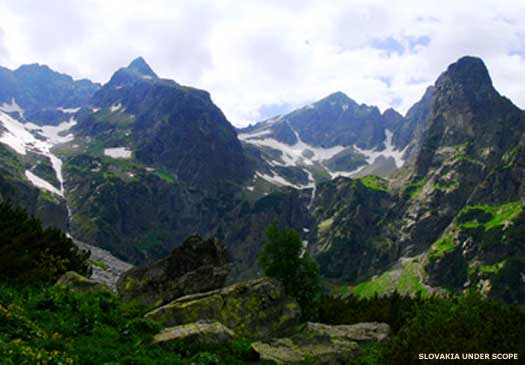 The High Tatra Mountains in Moravia (modern Slovakia) highlights just some of the very varied landscape in the region which would have been presented to the Langobards The High Tatra Mountains in Moravia (modern Slovakia) highlights just some of the very varied landscape in the region which would have been presented to the Langobards |
|
| 406 - 409 |
The bulk of the Suevi cross the Rhine at Mainz in 406 in association with the Vandali and Alani. After spending two years ravaging Gaul and migrating southwards into Aquitaine, all three tribes are pushed out by the Visigoths and cross the Pyrenees to settle in Roman Iberia by 409, disrupting the [Gallic](ItalyRomeEmpire.htm#Constantine III) empire of Constantine III. Some Suevi groups, including the Alemanni, remain behind on the Rhine, with some of them becoming part of the [Frankish](FranceFranks.htm#Tribal Leaders) confederation. |
|
| c.415? |
Continuing to wander, the Langobards enter 'Vurgundaib'. This is believed to be the original lands of the Burgundians, and can be located in the northern Carpathians. Once there, the Langobards are attacked in their encampment by 'Bulgars', probably as recruits of the Huns. They are defeated, their king is killed, and they are subjugated. However, it seems that they quickly rise up under Lamicho and inflict an unusual defeat on the Huns, although how long it takes for this to happen after their subjugation is unclear (perhaps it is not until c.440/450). |
|
| fl c.410s |
Lamicho / Lamissio / Laiamicho |
Foster son. See note for c.440/450. |
| fl c.420 - c.460 |
Lethu / Lethuc |
Vassal of the Huns? Ruled for approximately 40 years. |
| c.425 |
The Langobards are to be found in Slovenia, bordering Illyria, probably having moved there as soon as they had freed themselves from the Huns. The reign of Lethu heralds the emergence of the Langobard kings into documented history by the end of the century. He is the founder of the Lething dynasty of kings which provides rulers for the tribe for over a century. |
|
| c.440/450 |
TheGermanic Hundings or Hundingas (the 'hound clan') who are mentioned inWidsith are known for their feud with the Wulfings, a clan associated with the earlyDanish kings. The feud is most likely to be a conflict between the EasternGeats and the Langobards (the hound-clan), and some scholars have suggested that Hund may be the same person as Lamicho (although the dating does not align at all). Instead, there may be a confusion between a well-known southern Scandinavian feud and a different one here which involves the Langobards and their enemies, the Vulgares (Huns). The latter are defeated about this year. Coincidentally, perhaps, Lamicho's name also identifies itself with the 'hound clan', perhaps meaning 'little barker', and the Langobards become infamous for terrorising their enemies by claiming to have dog-headed warriors. |
|
| c.440s? |
Paul the Deacon's Historia Langobardorum preserves some of the history of the Langobards before their entrance into Italy. Around this time they begin to settle north of the Danube, where they successfully defend their independence against the Huns (when the latter are at the height of their power). |
|
| 454 |
The fall of the Huns allows the Heruli to rise up and free themselves. They set up a strongRoman foederati kingdom of their own in southern Moravia, from where they subdue all their neighbours, including the Langobards, turning them into vassals. |
|
| fl c.470s |
Hildeoc / Hildehoc / Aldihoc |
Vassal of the Heruli. |
| fl c.480s |
Gudeoc / Godehoc |
Vassal of the Heruli. |
| 487 - 488 |
Gudeoc rules the Langobards at the time when Romano-German general and emperor, Odoacer, destroys theGermanic Rugii, who had formerly been subjugated by the Huns. The Langobards migrate into the former Rugii territory, in modern Lower Austria, north of the Danube, and west of Korneuburg, to fill this vacuum. The area is part of the westernmost areas of Pannonia. The move may also be a way of removing themselves from Heruli dominance, and comes at an ideal time, as the Ostrogoths are themselves migrating into Italy for create a kingdom of their own. The Langobards clearly take note of this last event. |
|
| fl c.500 |
Claffo |
Vassal of the Heruli. |
| fl c.500? - 510 |
Tato |
Son. First king to be independently attested. Murdered. |
| 508 |
The Heruli kingdom in southern Moravia is destroyed by Tato, ending the problem of the inconvenient Heruli overlordship of the Langobards. Herulian fortunes wane after this disaster. Some remaining Heruls join the Langobards in LowerAustria. Tato himself is soon murdered by Wacho, son of Unichus. Ildichus fights on his father's side and is forced to flee to the Gepids, where he dies. |
|
| c.510 |
Ildichus |
Son. Died in exile, unable to claim the kingship. |
| fl c.510 - c.540 |
Wacho / Waccho (Waldchis?) |
Son of Unichus. |
| 530s |
After one generation, the minor federate Heruli kingdom in Singidunum (modern Belgrade) disappears from the historical record. These 'South Heruli' merge into surrounding populations or unite with the Langobards. |
|
| c.540 |
The restless Langobards apparently enter further into Pannonia, to their immediate east, and perhaps also into Dacia to the east of that. 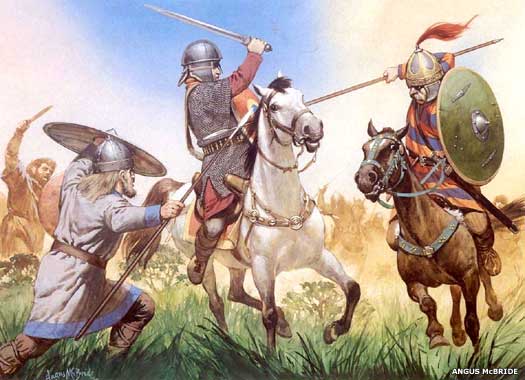 An artist's impression of mixed Langobard infantry and cavalry in action, exhibiting Late Roman and Germanic features in their dress and weapons An artist's impression of mixed Langobard infantry and cavalry in action, exhibiting Late Roman and Germanic features in their dress and weapons |
|
| c.540 - 546 |
Waltari / Walthari |
Infant son. Last of the Lething clan of kings. |
| c.540 - 546 |
Audoin |
Regent. |
| 546 |
Procopius says the young Waltari dies of disease, but it is equally possible that Audoin kills him before he reaches maturity and dispenses with the services of a regent. |
|
| 546 - c.565 |
Audoin / Alduin |
First of the Gausian kings. |
| 550s - 560s |
Under Audoin, the Langobards cross the Danube to re-enter Pannonia. Once there, they are granted subsidies by the Eastern Roman Emperor Justinian I, who encourages them to fight the Gepids who have established a large kingdom in Dacia. In effect, they are being hired as foederati, mercenaries, a role they fulfil to perfection. The Gepid kingdom is destroyed by 567. Alboin forcibly marries Rosamund, the daughter of the Gepid king. |
|
| c.565 - 568 |
Alboin |
Son. Led the Langobards intoItaly to form a kingdom. |
| 568 |
The death of Eastern Roman Emperor Justinian I in 565 ends a period of strong rule in Italy. The advent of the Avars in south-eastern Europe triggers a wave of migration which sees the remnants of the Gepids join the Langobards and both peoples, along with various flotsam and jetsam, enter northern Italy. It also permanently ends Germanic dominance in Pannonia. Following the Langobard migration southwards, a new confederation, the Bavarii, forms in their place north of the Danube, in modern south-eastern Germany. |
|
|
|
|
| North Italian Kingdom of the Lombards AD 568 - 773 A Germanic people, the Langobards were first noted in northern Silesia (now western Poland) as part of the Suevi confederation of tribes. They were used as a mercenary army by the Eastern Roman Emperor Justinian but, ejected from Pannonia by the Avars, they invaded northern Italy after the emperor's death, diminishing the influence of the Byzantine exarchate at Ravenna, and surrounding the 'island' dominion of Venice. They quickly became known as the Lombards, and this shortening of their name replaced any older usage. The Lombards began to attack the established order in Italy from 568, filling a void left by the destruction of the Ostrogoth kingdom, despite the best efforts of the Byzantine emperors to retain complete control of Italy themselves. They occupied territory that had been home to various Celtic tribes since the sixth century BC, such as the Cenomani and Insubres. These attacks badly affected Rome, cutting it off from the Byzantine empire, creating famine and causing records to be destroyed. Unlike the Ostrogoths, the Lombards did not seek to preserve the ancient Roman methods of governance. Their kingdom in the north, and the independent Lombard duchies to the south, introduced a distinctly Germanic flavour to the peninsular which eventually made it little different to much of the rest of Western Europe. (Information by Peter Kessler, with additional information from the Historia Francorum, Gregory of Tours, from the Chronicle of Fredegar / Latin Chronicle (author unknown but the work has been attributed to Fredegar since the sixteenth century thanks to his name being written in the margin), and from External Link: History of the Langobards, Paul the Deacon (Full Text).) |
|
|
| 568 - 573 |
Alboin |
Tribal leader who founded the kingdom. Murdered. |
| 569 |
The first Roman city to fall is that of Forum Iulii (now Cividale de Friuli), with smallEastern Roman defensive forces from Ravenna unable to offer any viable opposition (and perhaps not even bothering to try). Alboin creates the first Lombard duchy here, the duchy of Friuli, which he hands over to his nephew, Gisulf. The duchy will also form the kingdom's northern defensive line against possible incursions from outside Italy, especially by the Avars. In the same year, Vicenza, Verona and Brescia also fall to Alboin, followed by a great prize in the capture of Milan. |
|
| 570 - 571 |
Despite the arrival at Ravenna of a new exarch, the Lombards continue in their successful conquest of Italy. Territorial gains to the south of the exarchate of Ravenna are formalised in the shape of the duchies of Benevento and Spoleto, although these quickly become independent of the Lombard kingdom itself. Rome is temporarily isolated during this period and records destroyed, leaving little information about the pontificate of John III. |
|
| 572 |
After a siege lasting three years, the city of Pavia falls to the Lombards. They make it the first capital of their new kingdom. Although Ravenna manages to retain control of the region around this imperial city, and also re-securesRome through a narrow corridor of territory running through Perugia, the Lombards still have free access to southern Italy and their conquests there. The new kingdom is divided into thirty-six duchies, each based around a Roman city, most of which owe direct allegiance to the king. However, this form of rule makes the kingdom structurally weaker, even more so than Byzantine Italy once the exarchate begins to recover, and becomes a serious problem in the eighth century. The duchies include those of Asti, Bergamo, Brescia, Ceneda, Friuli, Pavia, San Giulio, Tridentum (Trent), Turin, Tuscia, Verona, and Vicenza, plus the independent Benevento and Spoleto in the south. Other regions such as Lugano in the very north are also brought under Lombard control. 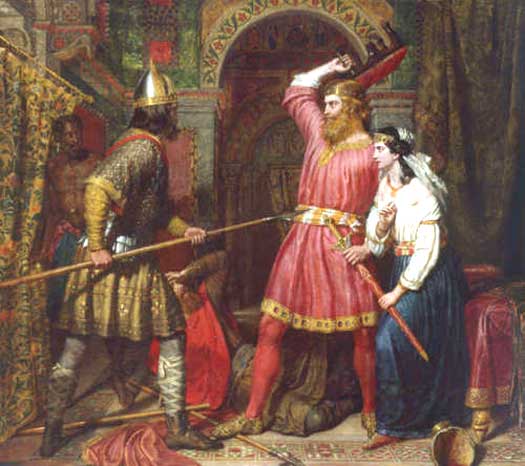 A dramatic depiction of the murder of Alboin, the tribal Langobard leader who united his people and forged a kingdom in northern Italy, by Charles Landseer in 1859 A dramatic depiction of the murder of Alboin, the tribal Langobard leader who united his people and forged a kingdom in northern Italy, by Charles Landseer in 1859 |
|
| 573 |
Bizarrely, after all the warfare of his reign, Alboin is murdered in Verona as part of a plot by his wife, Rosamund. This is possibly an act of revenge by Rosamund, whose father Kunimund had been the last ruler of the Gepid kingdom prior to its destruction by the Langobards, after which she had been forced to marry Alboin. Now Rosamund marries her chief accomplice, the king's foster brother and bearer of arms, Helmichis, and the two attempt to rule the kingdom. They are quickly dissuaded by the hostility of most of the Lombard warrior class, who proclaim Duke Celph the new king. Rather than go to war, the pair flee to Ravenna with their troops, the royal treasure, and Alboin's daughter, Albsuinda. The plot almost certainly has backing from Ravenna as it removes a powerful figure of opposition and raises the possibility of theEastern Roman reconquest of Italy. |
|
| 573 |
Helmichis / Helmegis |
Regicide and co-conspirator (and husband) of Rosamund. |
| 573 |
Rosamund |
Widow of Alboin and co-conspirator. Never actually ruled. |
| 573 - 575 |
Celph / Clef |
Lombard duke, proclaimed king. Assassinated. |
| 575 - 584 |
Celph enjoys a ruthless reign of just eighteen months before he, too, is assassinated. The act is probably carried out by a slave, and is probably due to plotting by Ravenna, as a disunited Lombard kingdom suits their hopes of reconquest perfectly. No successor to Celph is proclaimed. Instead, the 'rule of the dukes' is instigated, in which each duke rules his own portion of northern Italy and there is no overall ruler. There is also little unity, and the period lasts either ten or twelve years (574-585), witnessing a general breakdown of law and order across the country. |
|
| 584/585 |
The Lombards invade the Merovingian Frankish region of Provence. In return the Frankish king of Austrasia, Childebert II, and Guntramn, king of Burgundy, invade Lombard Italy, or Lombardy, as it is starting to be known. They capture Trent and open negotiations with the Eastern Roman emperor via Ravenna, perhaps with the view of carving up Italy between them. The Lombards, fearing Frankish domination, elect a king to end their disunity. He is ceded Pavia and half the ducal domains, and is successful in throwing out the invaders and restoring the strength of the kingdom. This reconsolidation confirms the partitioning of the peninsula which will remain effective in one form or another until the final unification ofItaly in 1871. |
|
| 584 - 590 |
Autharis |
Son. |
| 589 - 590 |
Having lived an almost fully independent existence in the south since his arrival, Zottone submits to the authority of King Autharis in the north, although the kingdom has rarely exerted any influence as far south as Zottone's territory. In, or by, 590, the duchy ofBenevento is formally established under Zottone. |
|
| 590 - 591 |
Theodelinda |
Wife. m Agilulf and became his queen. Also regent (615-625). |
| 590 - 591 |
Upon the death of Autharis, his queen, Theodelinda, rules briefly before marrying her husband's cousin in 591 and becoming his queen. She is the daughter of Duke Garibald I of [Bavaria](GermanyBavarians.htm#Bavarian Confederation) and is a Nicene Christian, an adherent of the Roman Church. She also is a very important figure in terms of increasing the importance and reach of the Catholic church inItaly over Arian Christianity. Thanks in large part to her efforts in winning converts the church at Rome is able to secure its primacy in Italy and can begin to focus its attention on making fresh converts elsewhere. |
|
| 591 - 615 |
Agilulf |
Cousin of Autharis. Duke of Turin. |
| 601 - 603 |
Agilulf fights a successful series of campaigns against rebel dukes in northern Italy, capturing Padua in 601, and Cremona and Mantua in 603. He is also successful in forcing the exarch of Ravenna to pay a sizable tribute. |
|
| 615 - 625 |
Adaloald |
Son. Went insane and was deposed by the nobles. |
| 615 - 625 |
Theodelinda |
Mother and regent, and widow of Autharis and Agilulf. |
| 625 - 636 |
Arioald |
Son-in-law. Duke of Turin. An Arian. |
| 631 |
Dagobert I of Austrasia has gained Neustria (in 629), and the Frankish kingdom overall (in 630). Around this year, Duke Chrodebert of Alemannia participates in Dagobert's assault on the realm of the [Carinthian](EasternCarinthia.htm#Slav Kingdom in Carinthia) Slavs to the east. The Alemannic host (exercitus Alamannorum, in the words of the Chronicle of Fredegar) is one of three columns formed by the Austrasian army (exercitus regnum universum Austrasiorum). While the Alemanni win a battle at an unknown location and their Lombard allies are successful against the Slavs in the Julian Alps, the main Austrasian Frankish army under Dagobert is defeated at the Battle of Wogastisburg. 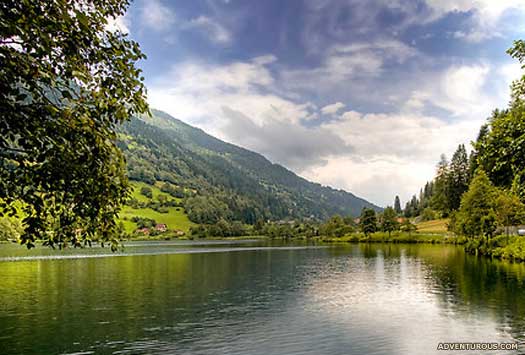 The modern southern Austrian region of Carinthia marked the upper edge of the Adriatic hinterland, and the southern borders of Samo's seventh century Slav kingdom, one of the earliest Slav states to appear The modern southern Austrian region of Carinthia marked the upper edge of the Adriatic hinterland, and the southern borders of Samo's seventh century Slav kingdom, one of the earliest Slav states to appear |
|
| 636 - 652 |
Rotharis / Rothari |
Duke of Brescia. |
| 643 |
One of the most active of Lombard kings since Alboin, Rotharis conquers the survivingEastern Roman territories of Linguria (Liguria) and Inner Veneto, dealing another blow to the fading authority of the exarch at Ravenna. He also codifies the laws and customs of the Lombards in the Edictum Rothari. |
|
| 652 - 653 |
Rodoald |
Son. Very young, and was killed by the pro-Catholic party. |
| 652 - 661 |
Aribert I / Aripert I |
Son of Gundoald, duke of Asti. |
| 661 |
The death of Aribert sees the kingdom divided in two, with one half going to Bertharit and the other to Godepert. The former has his capital at Milan while the latter is based at Pavia. The move is disastrous in terms of maintaining the security of the kingdom. |
|
| 661 |
Godepert |
Son. Ruled from Pavia. Assassinated. |
| 661 - 662 |
Bertharit / Perctarit |
Brother. Ruled from Milan. Usurped by Grimoald and fled. |
| 661 - 662 |
Not content with holding half of the kingdom, Godepert almost immediately starts a war against his brother in order that he might gain the rest. He invites Duke Grimoald ofBenevento to assist him, but the duke instead assassinates him and takes control of his territory. With a year he has forced Bertharit to flee the kingdom and is now king of a once-more united Lombard throne. |
|
| 662 - 671 |
Grimoald / Grimoaldo |
Duke of Benevento (647-662). |
| c.665 |
In return for helping Grimoald to usurp the kingdom, Count Transamund of Capua is granted the duchy of Spoleto. Upon gaining the throne, Grimoald also promotes his son, Romoaldo, to the position of duke of Benevento in his stead. |
|
| c.664/666 |
Lupus |
Usurper. Duke of Friuli (c.660-c.666). |
| c.666 |
Around AD 666, Grimoald faces perhaps the biggest threat to his kingship while he is fighting the Eastern Romans in the Mezzogiorno. Having left Duke Lupus of Friuli as his regent in the north, the duke now revolts, usurping Grimoald's authority. Grimoald is forces to return, and Lupus is thoroughly defeated and his duchy devastated by cooperative attacks by the Avars. Grimoald then hunts down Lupus' son, Arnefrit, and his Slav allies (quite possibly those of [ Khorushka](EasternCarinthia.htm#Principality of Khorushka)), and defeats them in battle at Nimis. Arnefrit dies during the battle and Grimoald gifts the duchy of Friuli to Wechthari. The new duke is an inveterate enemy of the Slavs, and almost immediately defeats a Slav raid from Khorushka (as outlined by Paul the Deacon and sometimes attributed to the year 664). |
|
| 671 |
Garibald |
Son. Ruled for three months. Deposed. |
| 671 |
Bertharit returns from exile, where he has been sheltering with the Franks, in order to regain his kingdom now that Grimoald is dead. The young Garibald offers little resistance in the face of the popular acclaim for the returning king. |
|
| 671 - 688 |
Bertharit / Perctarit |
Restored from exile inBenevento. Assassinated. |
| 688 - 689 |
Alahis (Alagis), duke of Trent, rebels for a second time - the first time had been against against Bertharit, who had pardoned and released the captured duke. Now, upon the death of Bertharit, Alahis rebels against his son, Cunibert, forcing the would-be king into a castle on an island in the middle of Lake Como. The following year, Alahis has lost the support of the nobles for his dictatorial rule and Cunibert is able to rally an army with which he defeats and kills the usurper. 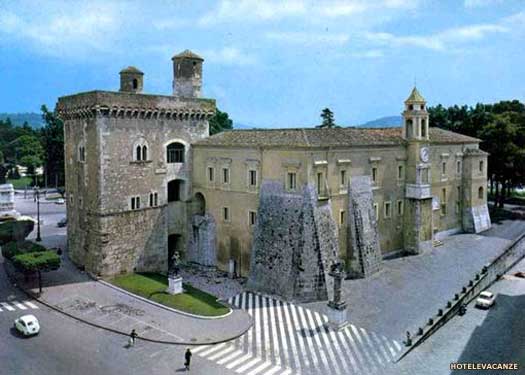 By the eighth century, Roman Beneventum had become early medieval Benevento, which was acclaimed as the new Pavia following the fall of the Lombard kingdom By the eighth century, Roman Beneventum had become early medieval Benevento, which was acclaimed as the new Pavia following the fall of the Lombard kingdom |
|
| 688 - 689 |
Alahis / Alagis |
Duke of Trent & Brescia, rebel, and usurper. Killed in battle. |
| 689 - 700 |
Cunibert / Cinincpert |
Son of Bertharit. |
| 700 - 701 |
Luitpert |
Son. Deposed by Raginpert. |
| 700 - 701 |
Ansprand |
Regent. Duke of Asti. |
| 701 |
Raginpert |
Grand-uncle, and son of Godepert. Duke of Turin. Died. |
| 701 |
Luitpert |
Restored by the regent. Murdered. |
| 701 |
Despite Ansprand's attempts as regent to retain the throne for Luitpert, he and his men are defeated in battle by Aribert at Pavia. Luitpert is later strangled in his bath on the orders of Aribert II, while Ansprand is forced to retreat over the Alps. |
|
| 701 - 711 |
Aribert II / Aripert II |
Son of Raginpert. Duke of Turin. Drowned while fleeing to Gaul. |
| c.705 |
Gisulf of Benevento marches on the cities of Arce, Arpino, and Sora, and after taking them ventures as far as Horrea, plundering and burning along the way. With the Campania region in southern Italy lying devastated behind him, and his forces encamped near Rome, he is persuaded through the receipt of gifts byPope John VI to withdraw in peace. |
|
| 711 |
Ansprand returns with a large [Bavarian](GermanyBavarians.htm#Bavarian Confederation) army and the brutal Aribert is defeated at Pavia. He flees to his capital and then attempts to enter Gaul along with his treasures. He drowns in the River Ticino. |
|
| 711 - 712 |
Ansprand |
Former regent. Ruled for three months before dying. |
| 712 - 744 |
Liutprand |
Son. |
| 724 |
In documents that are disputed in terms of their authenticity, Liutprand cedes various properties in Lugano to the Church of Saint Carpophorus in Como. 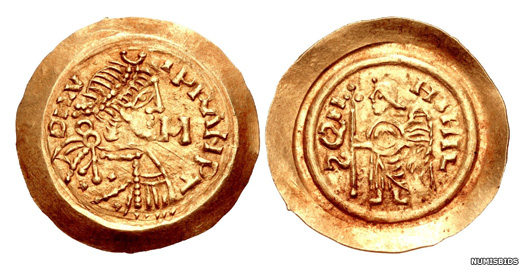 Two sides of a coin issued during the reign of Liutprand, the conqueror both of the exarchate of Ravenna and of Rome, temporarily ending Byzantine authority in Italy Two sides of a coin issued during the reign of Liutprand, the conqueror both of the exarchate of Ravenna and of Rome, temporarily ending Byzantine authority in Italy |
|
| 726 - 728 |
Shortly after capturing Corsica, Liutprand takes control of the exarchate of Ravenna and of Rome.Eastern Roman imperial authority is temporarily unrecognised in Italy, marking a break in Constantinople's control overRome. |
|
| 732 |
Entering Benevento, Liutprand removes both Duke Andelais and the usurped infant, Gisulf II, from the throne and its succession. Instead he places his own nominee, Gregory, on the ducal seat. |
|
| 738 - 740 |
Transamund of Spoleto rebels against Liutprand and forms an alliance withPope Gregory III. The pope provides him with shelter while a substitute duke holds power in Spoleto in 739. Transamund regains his duchy, before being captured by Liutprand and sent forcibly to a monastery. The links forged by Liutprand in this period effectively bind Spoleto closer to the Lombard kingdom, with three subsequent dukes of Spoleto also ruling the Lombards at different points in their careers. |
|
| 742 |
Liutprand deals with Godescalco, the unapproved duke of Benevento. The duke is already preparing to flee by ship when Liutprand enters Benevento, but the people rise up and slay Godescalco, apparently remaining faithful to their former duke, Rimoaldo II, and his familial succession. |
|
| 744 |
Hildeprand 'the Useless' |
Grandson or nephew. Deposed due to incompetence. Soon died. |
| 744 - 749 |
Ratchis / Rachis of Friuli |
Duke of Spoleto (756-757). Abdicated. |
| 749 - 756 |
Aistulf of Friuli |
Brother. Duke of Spoleto (751-756). |
| 756 |
Having abdicated the throne after his misconceived siege of Perugia, Ratchis attempts to reclaim it following the death of Aistulf. He is defeated by Daufer and retires to a cloister. |
|
| 756 - 774 |
Daufer / Desiderius of Brescia |
Duke of Spoleto (758-759). Imprisoned. |
| 751 - 756 |
The Lombards subdue Ravenna, ending the exarchate, and attackRome in 755, which is now reduced to her ancient territory from Viterbo to Terracina, and from Narni to the mouth of the Tiber. The city is delivered by Pepin III, king of the Franks and the Lombards are subdued the following year (756) The ex-Eastern Roman exarchate is handed to Rome as the Papal States and northern Italy becomes part of the Frankish empire. 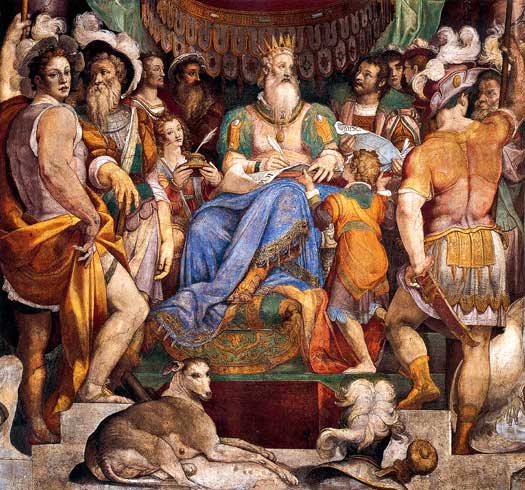 Daufer, or Desiderius, achieved the final conquest of Ravenna only to lose the entire Lombard kingdom to the Carolingian Franks Daufer, or Desiderius, achieved the final conquest of Ravenna only to lose the entire Lombard kingdom to the Carolingian Franks |
|
| 758 |
Arechi II becomes duke of Benevento. His marriage to Adelperga is notable as she is the daughter of Daufer. This makes any children by her direct descendants of the Lombardic kings, conferring an air of authority upon them and ensuring the line endures. |
|
| 774 - 781 |
Daufer invades the papal territories, and Pope Adrian is forced to call upon the Frankish King Charlemagne for support and aid. Charlemagne enters Italy (and Corsica) and breaks the Lombards, taking the title of 'king of the Lombards' for himself. Daufer is imprisoned and his son, Adelchis, is forced to flee the country.Rome gains part of the Lombard duchy of Benevento out of the conquest while the rest signals its independence as a continuation of the Lombard kingdom. In 781, Pepin, son of Charlemagne, is given command of the Italian portion of the Frankish empire, which includes the former Lombard territories. He also gains the iron crown of the rex Langobardum (king of the Lombards), and it remains in use by the Frankish kings ofItaly. |
|
 |
|
|
 Langobards (Lombards) The Germanic tribes seem to have originated in a homeland in southern Scandinavia (Sweden and Norway, with the Jutland area of northern Denmark, along with a very narrow strip of Baltic coastline). They had been settled here for over two thousand years following the Indo-European migrations. The Germanic ethnic group began as a division of the western edge of late proto-Indo-European dialects around 3300 BC, splitting away from a general westwards migration to head towards the southern coastline of the Baltic Sea. By the time the Germanic tribes were becoming key players in the politics of Western Europe in the last two centuries BC, the previously dominant Celts were on the verge of being conquered and dominated by Rome. They had already been pushed out of northern and Central Europe by a mass of Germanic tribes which were steadily carving out a new homeland. The Langobards (or Langobardi) originated in and above northern Silesia (now western Poland) as part of the Suevi confederation of tribes. It is possible that they, like the Goths, had earlier origins in southern Scandinavia and were forced to migrate due to population expansion. They were also known by their original ethnic name, the Winnili ('Winn' probably being Germanic for 'striving' and 'being victorious', added to an 'il/el' diminutive suffix and a Latin plural, '-il', producing something along the lines of 'the little tribe that succeeds in fighting' or 'the little winners'). The later name of that part of the tribe that apparently migrated out of Scandinavia was the Langobards, or 'hound clan'. Their founder is sometimes named as Sceafa Longbeardum, the Sceaf of Angeln who perhaps is confused with an early Langobard ruler of the same name, or hints at an early connection between the two tribes during (or before) their sojourn on the southern Baltic coastline in the first and second centuries AD. The Langobards played little part in the downfall of the Roman empire. Separated from the main Suebian host, they migrated south in the sixth century, filling the gap left on the north bank of the Danube in Pannonia by the collapse of the Huns. After being used as a mercenary army by the Byzantine empire, the Lombards began to invade northern Italy. Few Langobard leaders are known before the tribe entered into northern Italy, but Paul the Deacon's Historia Langobardorum, which was taken in part from the Origo Gentis Langobardorum, around the middle of the seventh century, does paint a creditable story of their origins in northern Central Europe. As a member of a long-established Lombard family in Italy, he was well placed to be able to access tribal folk tales, but his claim that the name 'Langobard' pertains to the length of the beards worn by the men is fanciful. A modern theory which contradicts the reasoning that the name means 'hound clan' suggests that it instead stems from one of the names of Odin, and was taken when the tribe made a conscious switch to the worship of that god. (Information by Peter Kessler, with additional information by Edward Dawson and Vassil Karloukovski, from The Langobards and the 'Vulgares' in Historia Langobardorum, J Otto Maenchen-Helfen (California Press, 1973), from the Codex Gothanus, Lupus Servatus (commissioned by Eberhard of Friuli), from Histories, Annals, Tacitus, from Geography, Ptolemy, and from External Link: Geography, Strabo (H C Hamilton & W Falconer, London, 1903, Perseus Online Edition).)
Langobards (Lombards) The Germanic tribes seem to have originated in a homeland in southern Scandinavia (Sweden and Norway, with the Jutland area of northern Denmark, along with a very narrow strip of Baltic coastline). They had been settled here for over two thousand years following the Indo-European migrations. The Germanic ethnic group began as a division of the western edge of late proto-Indo-European dialects around 3300 BC, splitting away from a general westwards migration to head towards the southern coastline of the Baltic Sea. By the time the Germanic tribes were becoming key players in the politics of Western Europe in the last two centuries BC, the previously dominant Celts were on the verge of being conquered and dominated by Rome. They had already been pushed out of northern and Central Europe by a mass of Germanic tribes which were steadily carving out a new homeland. The Langobards (or Langobardi) originated in and above northern Silesia (now western Poland) as part of the Suevi confederation of tribes. It is possible that they, like the Goths, had earlier origins in southern Scandinavia and were forced to migrate due to population expansion. They were also known by their original ethnic name, the Winnili ('Winn' probably being Germanic for 'striving' and 'being victorious', added to an 'il/el' diminutive suffix and a Latin plural, '-il', producing something along the lines of 'the little tribe that succeeds in fighting' or 'the little winners'). The later name of that part of the tribe that apparently migrated out of Scandinavia was the Langobards, or 'hound clan'. Their founder is sometimes named as Sceafa Longbeardum, the Sceaf of Angeln who perhaps is confused with an early Langobard ruler of the same name, or hints at an early connection between the two tribes during (or before) their sojourn on the southern Baltic coastline in the first and second centuries AD. The Langobards played little part in the downfall of the Roman empire. Separated from the main Suebian host, they migrated south in the sixth century, filling the gap left on the north bank of the Danube in Pannonia by the collapse of the Huns. After being used as a mercenary army by the Byzantine empire, the Lombards began to invade northern Italy. Few Langobard leaders are known before the tribe entered into northern Italy, but Paul the Deacon's Historia Langobardorum, which was taken in part from the Origo Gentis Langobardorum, around the middle of the seventh century, does paint a creditable story of their origins in northern Central Europe. As a member of a long-established Lombard family in Italy, he was well placed to be able to access tribal folk tales, but his claim that the name 'Langobard' pertains to the length of the beards worn by the men is fanciful. A modern theory which contradicts the reasoning that the name means 'hound clan' suggests that it instead stems from one of the names of Odin, and was taken when the tribe made a conscious switch to the worship of that god. (Information by Peter Kessler, with additional information by Edward Dawson and Vassil Karloukovski, from The Langobards and the 'Vulgares' in Historia Langobardorum, J Otto Maenchen-Helfen (California Press, 1973), from the Codex Gothanus, Lupus Servatus (commissioned by Eberhard of Friuli), from Histories, Annals, Tacitus, from Geography, Ptolemy, and from External Link: Geography, Strabo (H C Hamilton & W Falconer, London, 1903, Perseus Online Edition).) A close-up of the Valdinievole plate showing Lombard King Agilulf (591-615) receiving the submission of barbarous enemies, flanked by winged victories, although its authenticity has been questioned
A close-up of the Valdinievole plate showing Lombard King Agilulf (591-615) receiving the submission of barbarous enemies, flanked by winged victories, although its authenticity has been questioned The mouth of the River Elbe was held by the Langobards during the early part of the first century AD, but it was also the only access to the sea for the powerful Semnones tribe
The mouth of the River Elbe was held by the Langobards during the early part of the first century AD, but it was also the only access to the sea for the powerful Semnones tribe The High Tatra Mountains in Moravia (modern Slovakia) highlights just some of the very varied landscape in the region which would have been presented to the Langobards
The High Tatra Mountains in Moravia (modern Slovakia) highlights just some of the very varied landscape in the region which would have been presented to the Langobards An artist's impression of mixed Langobard infantry and cavalry in action, exhibiting Late Roman and Germanic features in their dress and weapons
An artist's impression of mixed Langobard infantry and cavalry in action, exhibiting Late Roman and Germanic features in their dress and weapons A dramatic depiction of the murder of Alboin, the tribal Langobard leader who united his people and forged a kingdom in northern Italy, by Charles Landseer in 1859
A dramatic depiction of the murder of Alboin, the tribal Langobard leader who united his people and forged a kingdom in northern Italy, by Charles Landseer in 1859 The modern southern Austrian region of Carinthia marked the upper edge of the Adriatic hinterland, and the southern borders of Samo's seventh century Slav kingdom, one of the earliest Slav states to appear
The modern southern Austrian region of Carinthia marked the upper edge of the Adriatic hinterland, and the southern borders of Samo's seventh century Slav kingdom, one of the earliest Slav states to appear By the eighth century, Roman Beneventum had become early medieval Benevento, which was acclaimed as the new Pavia following the fall of the Lombard kingdom
By the eighth century, Roman Beneventum had become early medieval Benevento, which was acclaimed as the new Pavia following the fall of the Lombard kingdom Two sides of a coin issued during the reign of Liutprand, the conqueror both of the exarchate of Ravenna and of Rome, temporarily ending Byzantine authority in Italy
Two sides of a coin issued during the reign of Liutprand, the conqueror both of the exarchate of Ravenna and of Rome, temporarily ending Byzantine authority in Italy Daufer, or Desiderius, achieved the final conquest of Ravenna only to lose the entire Lombard kingdom to the Carolingian Franks
Daufer, or Desiderius, achieved the final conquest of Ravenna only to lose the entire Lombard kingdom to the Carolingian Franks